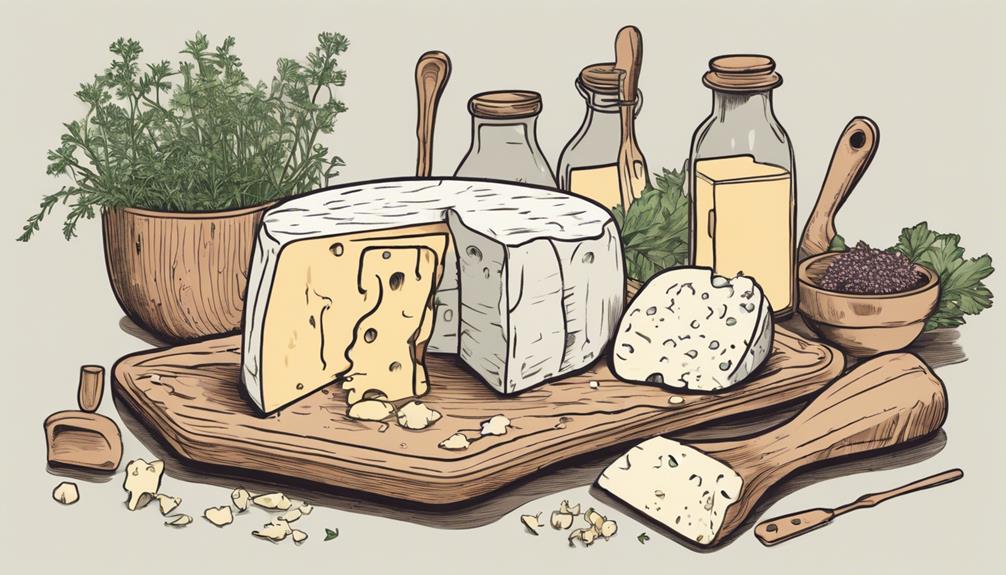How To Become More Self-Sufficient Without Starting a Full-Blown Farm…
Want to start preserving your harvest, making your own soap, or building a backyard root cellar — but not sure where to begin? “Homesteading Advice” gives you instant lifetime access to 35+ practical homesteading books on food preservation, veggie gardening, DIY natural cleaning products (save over $250 per year with this skill alone), brewing, off-grid energy, and a whole lot more…
Click Here To Check It Out Now!
“I’ve been trying my hand at cheese making for a while, but I keep running into the problem of my curds turning out too soft or mushy. I follow the recipes pretty closely, but this keeps happening and it’s frustrating! What could be causing it and how can I fix it?” Thanks a lot, David, Seattle, USA.
What Causes Curds To Be Too Soft Or Mushy?
Hey David, thanks for reaching out! Soft and mushy curds can be such a nuisance, especially when you’re excited about making the perfect cheese. Let’s break down the reasons behind this common issue and explore some practical solutions.
pH Levels and Acidity
One of the primary reasons your curds might be too soft is the pH level. The acidity of the milk plays a crucial role in curd formation. If the milk doesn’t reach the correct pH level during the cheese-making process, it can result in weak curds.
The ideal pH level should drop steadily as the curds form. If your pH is too high (milk too basic), the proteins won’t bind together effectively.
- **Monitor pH Levels**: Invest in good pH strips or a digital pH meter. Aim for a pH of around 6.5 before adding rennet. As the curds form, it should drop to 4.6-4.8.
- **Adjust Timing**: Make sure to give enough time for the milk to acidify before adding rennet.
Temperature Control
Temperature is another biggie, David. The enzymatic reactions that cause milk to form curds are highly temperature-sensitive. Too hot or too cold can lead to weak curds.
- **Consistent Heat**: Maintain a steady temperature. For many cheeses, this means keeping the milk around 86-90°F (30-32°C) when adding mesophilic cultures, and near 100°F (38°C) with thermophilic cultures.
- **Slow Heating**: Heat the milk slowly and steadily. Rapid temperature changes can disrupt the curd formation.
Quality of Milk
The quality and type of milk you use also significantly affect curd formation. When milk is too fresh or overly processed, it can hinder proper curdling.
- **Choice of Milk**: Use non-ultra-pasteurized milk. The high-heat process of ultra-pasteurization destroys the proteins needed for proper curd formation.
- **Freshness**: If possible, use milk that is as fresh as possible. Some store-bought milks may have additives that can affect curd formation.
Rennet Quality and Quantity
Rennet is an enzyme that plays a key role in separating curds from whey. The quality and quantity of rennet can make a significant difference.
- **Correct Measurement**: Too little rennet can cause weak curds. Follow the recipe closely and measure accurately.
- **Fresh Rennet**: Ensure your rennet is fresh. Expired or improperly stored rennet loses potency.
- **Milk Type Adjustments**: If using different types of milk (like goat or sheep milk), you might need to adjust the rennet quantity.
Curd Cutting Technique
The way you cut the curds matters too. Cutting curds helps them release whey, but improper techniques can lead to soft and mushy cheese.
- **Uniform Cuts**: Cut the curds evenly. Uneven curds can lead to varied moisture levels, resulting in mushy spots.
- **Proper Timing**: Let the curds set fully before cutting. Cutting too early can result in curds that haven’t formed completely.
Stirring and Handling
Stirring and handling the curds gently and correctly help to avoid breaking down the curds too much.
- **Gentle Stirring**: Stir the curds gently to avoid breaking them down excessively. Rough handling can lead to mushiness.
- **Proper Equipment**: Use a slotted spoon or a curd cutter designed for gentle handling.
Draining and Whey Expulsion
Draining the whey properly is just as vital. Poor drainage results in curds retaining too much moisture, making them soft and mushy.
- **Draining Time**: Ensure that you give enough time for the whey to drain. Rushing this process can trap moisture in the curds.
- **Use Cheesecloth**: Use a cheesecloth to assist in draining whey effectively. You can also use a strainer for additional support.
Environmental Factors
The environment in which you’re making cheese can also impact the texture of your curds.
- **Humidity**: High humidity might slow down the whey expulsion process.
- **Air Circulation**: Proper air circulation helps in moisture management. Ensure your cheese-making area is well-ventilated.
Recipe and Culture Accuracy
Lastly, double-checking your recipe and the type of culture you’re using can lead to different outcomes.
- **Culture Matching**: Use the appropriate culture for the cheese type you are making. Different cultures behave differently and affect curd firmness.
- **Recipe Precision**: Sometimes, altering even small details in a recipe can lead to different results. Stick closely to verified recipes.
Final Thoughts…
David, you’ve got a lot of factors to consider, but armed with this information, you’ll be well on your way to mastering your curds. Monitoring pH levels, maintaining consistent temperatures, using quality ingredients, and being gentle with your curds can all make a huge difference. Thanks for reaching out, and happy cheese making!

